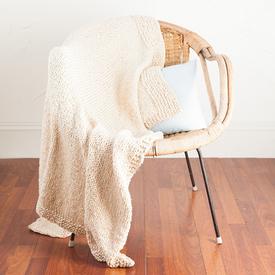Keep your kids in line
with these simple strategies.
By Cynthia Hanson
As a 2-year-old, Nathaniel Lampros,
of Sandy, Utah, was fascinated with toy swords and loved to duel with Kenayde,
his 4-year-old sister. But inevitably, he'd whack her in the head, she'd
dissolve in tears, and Angela, their mother, would come running to see what had
happened. She'd ask Nathaniel to apologize, as well as give Kenayde a hug and
make her laugh to pacify hurt feelings. If he resisted, Angela would put her
son in time-out.
"I worried that Nathaniel
would never outgrow his rough behavior, and there were days when I'd get so
frustrated with him that I'd end up crying," recalls Lampros, now a mother
of four. "But I really wanted Nathaniel to play nicely, so I did my best
to teach him how to do it."
For many mothers, doling out
effective discipline is one of the toughest and most frustrating tasks of
parenting, a seemingly never-ending test of wills between you and your child.
Because just when your 2-year-old "gets" that she can't thump her
baby brother in the head with a doll, she'll latch on to another bothersome
behavior -- and the process starts anew.
What exactly does it mean to
"discipline" a
toddler? Some people equate it with spanking
and punishment, but that's not what we're talking about. As many parenting
experts see it, discipline is about setting rules to stop your little one from
engaging in behavior that's aggressive (hitting and biting), dangerous (running
out in the street), and inappropriate (throwing food). It's also about
following through with consequences when he breaks the rules -- or what Linda
Pearson, a Denver-based psychiatric nurse practitioner who specializes in
family and parent counseling, calls "being a good boss." Here are
seven strategies that can help you set limits and stop bad behavior.

1. Pick Your Battles
"If
you're always saying, 'No, no, no,' your child will tune out the no and won't
understand your priorities," says Pearson, author of The Discipline Miracle(AMACOM). "Plus you
can't possibly follow through on all of the nos.'" Define what's important
to you, set limits accordingly, and follow through with appropriate
consequences. Then ease up on little things that are annoying but otherwise
fall into the "who cares?" category -- the habits your child is
likely to outgrow, such as insisting on wearing purple (and only purple).
For Anna Lucca, of Washington,
D.C., that means letting her 2-1/2-year-old daughter trash her bedroom before
she dozes off for a nap. "I find books and clothes scattered all over the
floor when Isabel wakes up, so she must get out of bed to play after I put her
down," Lucca says. "I tell her not to make a mess, but she doesn't
listen. Rather than try to catch her in the act and say, 'No, no, no,' I make
her clean up right after her nap." Lucca is also quick to praise Isabel
for saying please and sharing toys with her 5-month-old sister.
"Hopefully, the positive reinforcement will encourage Isabel to do more of
the good behavior -- and less of the bad," she says.
2. Know Your Child's Triggers
Some
misbehavior is preventable -- as long as you can anticipate what will spark it
and you create a game plan in advance, such as removing tangible temptations.
This strategy worked for Jean Nelson, of Pasadena, California, after her
2-year-old son took delight in dragging toilet paper down the hall, giggling as
the roll unfurled behind him. "The first two times Luke did it, I told
him, 'No,' but when he did it a third time, I moved the toilet paper to a high
shelf in the bathroom that he couldn't reach," Nelson says. "For a
toddler, pulling toilet paper is irresistible fun. It was easier to take it out
of his way than to fight about it."
If your 18-month-old is prone to
grabbing cans off grocery store shelves, bring along some toys for him to play
with in the cart while you're shopping. If your 2-year-old won't share her
stuffed animals during playdates at home, remove them from the designated play
area before her pal arrives. And if your 3-year-old likes to draw on the walls,
stash the crayons in an out-of-reach drawer and don't let him color without
supervision. Also, some children act out when they're hungry, overtired, or
frustrated from being cooped up inside, says Harvey Karp, MD, creator of the
DVD and book The Happiest Toddler on the
Block (Bantam). Make sure your child eats healthy snacks, gets enough
sleep (a minimum of 10 hours at night, plus a one- to two-hour nap),
and plays outside to burn off
energy -- even in chilly weather.
3. Be Consistent
"Between
the ages of 2 and 3, children are working hard to understand how their behavior
impacts the people around them," says Claire Lerner, LCSW, director of
parenting resources with Zero to Three, a nationwide nonprofit promoting the
healthy development of babies and
toddlers. "If your reaction to a
situation keeps changing -- one day you let your son throw a ball in the house
and the next you don't -- you'll confuse him with mixed signals."
There's no timetable as to how many
incidents and reprimands it will take before your child stops a certain
misbehavior. But if you always respond the same way, he'll probably learn his
lesson after four or five times. Consistency was key for Orly Isaacson, of
Bethesda, Maryland, when her 18-month-old went through a biting phase. Each
time Sasha chomped on Isaacson's finger, she used a louder-than-usual voice to
correct her -- "Nooooooooo, Sasha! Don't bite! That hurts Mommy!" --
and then handed her a toy as a distraction. "I'm very low-key, so raising
my voice startled Sasha and got the message across fast," she says. A
caveat: by age 2, many kids learn how to make their parents lose resolve just
by being cute. Don't let your child's tactics sway you -- no matter how cute
(or clever) they are.
4. Don't Get Emotional
Sure,
it's hard to stay calm when your 18-month-old yanks the dog's tail or your
3-year-old refuses to brush his teeth for the gazillionth night in a row. But
if you scream in anger, the message you're trying to send will get lost and the
situation will escalate -- fast. "When a child is flooded with a parent's
negative mood, he'll see the emotion and won't hear what you're saying,"
explains William Coleman, MD, professor of pediatrics at the University of
North Carolina Medical School, in Chapel Hill. Indeed, an angry reaction will
only enhance the entertainment value for your child, so resist the urge to
raise your voice. Take a deep breath, count to three, and get down to your
child's eye level. Be fast and firm, serious and stern when you deliver the
reprimand.
5. Keep It Short and Simple
If
you're like most first-time mothers, you tend to reason with your child when
she breaks rules, offering detailed explanations about what she did wrong and
issuing detailed threats about the privileges she'll lose if she doesn't stop
misbehaving. But as a discipline strategy, overtalking is as ineffective as
becoming overly emotional, warns Dr. Coleman. While an 18-month-old lacks the
cognitive ability to understand complex sentences, a 2- or 3-year-old with more
developed language skills still lacks the attention span to absorb what you're
saying. Instead, speak in short phrases, repeating them a few times and
incorporating vocal inflections and facial expressions, Dr. Coleman advises.
For example, if your 18-month-old swats your arm, say, "No, Jake! Don't
hit Mommy! That hurts! No hitting. No hitting." A 2-year-old can
comprehend a bit more: "Evan, no jumping on the sofa! No jumping. Jumping
is dangerous -- you could fall. No jumping!" And a 3-year-old can process
cause and effect, so state the consequences of the behavior: "Ashley, your
teeth need to be brushed. You can brush them -- or I can brush them for you.
You decide. The longer it takes, the less time we'll have to read Dr.
Seuss."
6. Give a Time-Out
If
repeated reprimands, redirection, and loss of privileges haven't cured your
child of his offending behavior, consider putting him in time-out for a minute
per year of age. "This is an excellent discipline tool for kids who are
doing the big-time no-nos," Dr. Karp explains. Before imposing a time-out,
put a serious look on your face and give a warning in a stern tone of voice
("I'm counting to three, and if you don't stop, you're going to time-out.
One, two, THREE!"). If she doesn't listen, take her to the quiet and safe
spot you've designated for time-outs, and set a timer. When it goes off, ask
her to apologize and give her a big hug to convey that you're not angry.
"Nathaniel hated going to time-out for hitting his sister with the plastic
sword, but I was clear about the consequences and stuck with it," says
Angela Lampros. "After a few weeks, he learned his lesson." Indeed,
toddlers don't like to be separated from
their parents and toys, so eventually the mere threat of a time-out should be
enough to stop them in their tracks.
7. Stay Positive
No
matter how frustrated you feel about your child's misbehavior, don't vent about
it in front of him. "If people heard their boss at work say, 'I don't know
what to do with my employees. They run the company, and I feel powerless to do
anything about it,' they'd lose respect for him and run the place even
more," says Pearson. "It's the same thing when children hear their
parents speak about them in a hopeless or negative way. They won't have a good
image of you as their boss, and they'll end up repeating the behavior."
Still,
it's perfectly normal to feel exasperated from time to time. If you reach that
point, turn to your spouse, your pediatrician, or a trusted friend for support
and advice.
Ages & Stages
Effective
discipline starts with understanding where your child falls on the
developmental spectrum. Our guide:
·
At 18 months your child is curious,
fearless, impulsive, mobile, and clueless about the consequences of her actions
-- a recipe for trouble. "My image of an 18-month-old is a child who's
running down the hall away from his mother but looking over his shoulder to see
if she's there and then running some more," says William Coleman, MD,
professor of pediatrics at the Center for Development and Learning at the
University of North Carolina Medical School, in Chapel Hill. "Though he's
building a vocabulary and can follow simple instructions, he can't effectively
communicate his needs or understand lengthy reprimands. He may bite or hit to
register his displeasure -- or to get your attention. Consequences of
misbehavior must be immediate. Indeed, if you wait even 10 minutes to react, he
won't remember what he did wrong or tie his action to the consequence, says
Linda Pearson, a Denver-based psychiatric nurse practitioner.
·
At age 2 your child is using her developing
motor skills to test limits, by running, jumping, throwing, and climbing. She's
speaking a few words at a time, she becomes frustrated when she can't get her
point across, and she's prone to tantrums. She's also self-centered and doesn't
like to share. "People call it the terrible twos, but it's really the
'autonomous twos,'" Dr. Coleman says. Consequences should be swift, as a
2-year-old is unable to grasp time. But since she still lacks impulse control,
give her another chance soon after the incident, says Claire Lerner, LCSW,
director of parenting resources with Zero to Three, a nationwide nonprofit
promoting the healthy development of babies and toddlers.
·
At age 3 your child is now a chatterbox; he's using
language to argue his point of view. Since he loves to be with other children
and has boundless energy, he may have a tough time playing quietly at home.
"Taking a 3-year-old to a gym or karate class will give him the social
contact he craves and let him release energy," says Harvey Karp, MD, an
assistant professor of pediatrics at the University of California-Los Angeles
Medical School. "At this age, kids need that as much as they need
affection and food." He also knows right from wrong, understands cause and
effect, and retains information for several hours. Consequences can be delayed
for maximum impact, and explanations can be more detailed. For example, if he
hurls Cheerios at his sister, remind him about the no-food-throwing rule and
explain that if he does it again, he won't get to watch Blues Clues. If he continues to throw food,
take it away from him. When he asks to watch TV, say, "Remember when Mommy
told you not to throw cereal -- and you did anyway? Well, Mommy said the consequence
is no Blues Clues today.
All content here, including advice from doctors and
other health professionals, should be considered as opinion only. Always seek
the direct advice of your own doctor in connection with any questions or issues
you may have regarding your own health or the health of others.
I did not write this article. For the Original and others like it please visit https://www.parents.com/toddlers-preschoolers/discipline/tips/7-tips-for-disciplining-your-toddler/





